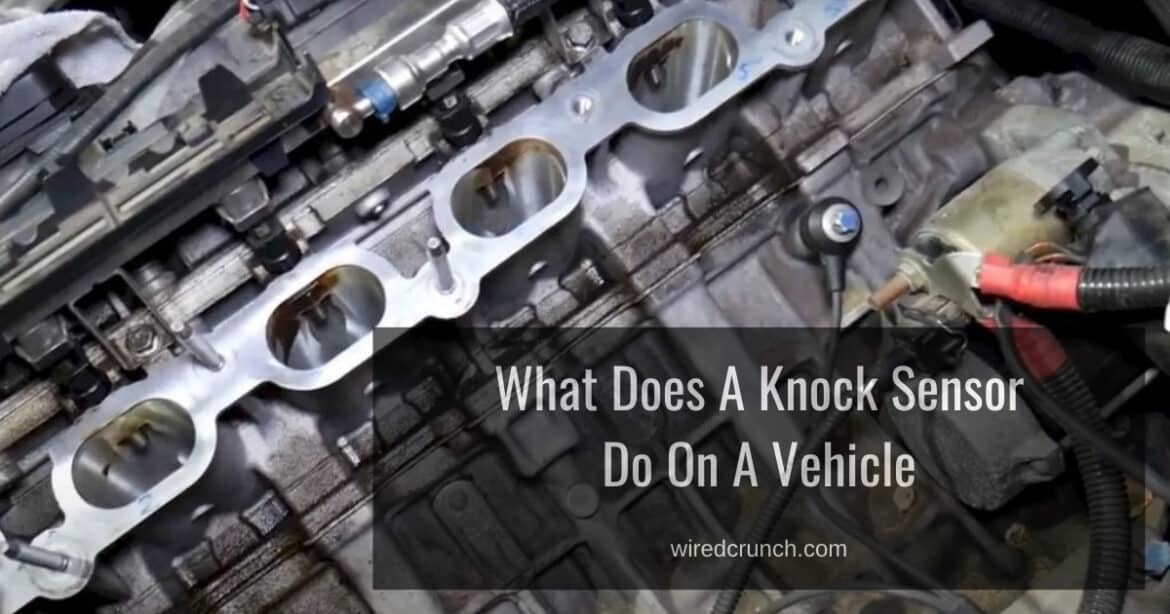Discover how a knock sensor acts as your car’s attentive ear, detecting engine knocks and alerting the computer for smooth, damage-free operation. Learn its crucial role in keeping your vehicle running smoothly
Have you ever glanced under the hood of your car and wondered about the small yet significant device nestled within the engine? That unassuming component is the knock sensor, a vital part of modern vehicle technology. In this article, we’ll delve into the world of knock sensors, unraveling their purpose, functionality, and significance in ensuring the smooth operation of your vehicle’s engine. From understanding what a knock sensor is to exploring its role in detecting engine knock or detonation, we’ll shed light on this often overlooked but crucial component. By the end, you’ll grasp the essence of the knock sensor and gain insights into maintaining it properly, ensuring optimal performance for your vehicle. So, let’s embark on this journey to demystify the knock sensor and its indispensable role in the driving experience.
Table of Contents
What Is A Knock Sensor?
An engine knock, also called engine ping or detonation, happens when an unexpected ignition or explosion occurs in a cylinder apart from the usual controlled ignition from a spark plug. It makes a sound and affects how the engine works. Even though we can hear loud knocking and pinging, a special sensor can detect even tiny amounts of it that we can’t hear.
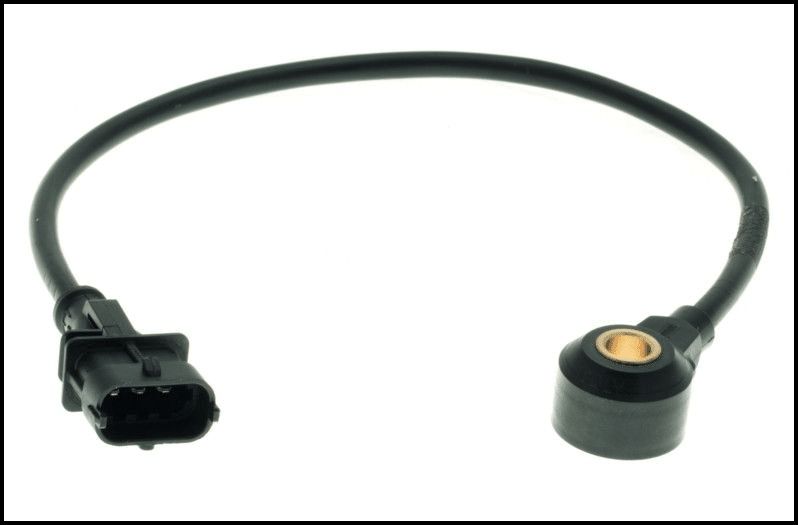
Where is a Knock Sensor Located?
A knock sensor is usually put right on the outside of the engine block, but sometimes it’s placed under the intake manifold. This sensor helps the engine by detecting any knocking noises and telling the computer to adjust things so the engine runs smoothly.
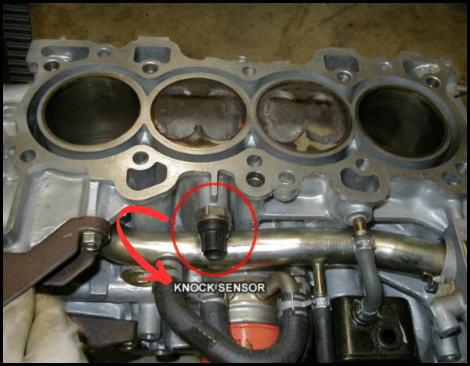
Why are knock sensors important in today’s vehicles?
Knock sensors are really important in modern engines. They can find and stop something called an engine knock. This is crucial because an engine knock can hurt the engine. Also, knock sensors help the engine work better by ensuring the air and fuel mix just right. They tell a part of the engine called the ECM what’s happening.
Then, the ECM can change how much fuel goes in and when the spark happens. This makes the engine run smoother and use less gas. Plus, knock sensors make the engine cleaner. They help it burn fuel better, which means fewer bad gases come out. So, these sensors are a big deal for keeping engines running well and being kinder to the environment.
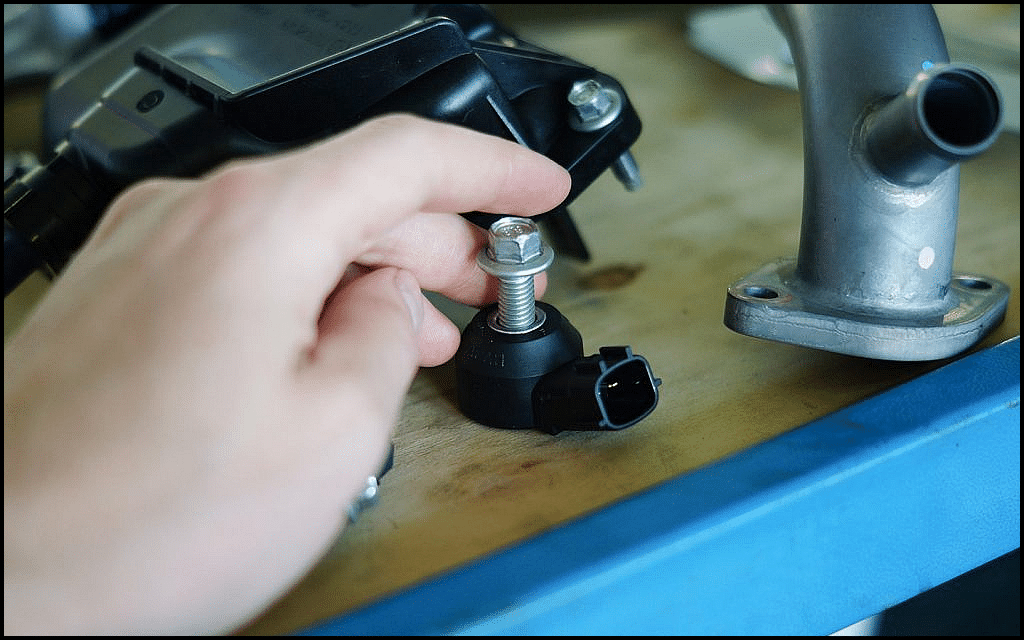
How Do Knock Sensors Work?
This part will tell you how a knock sensor works. The sensor’s job is to find the fast shakes that happen when the engine knocks. Then, it changes these shakes into an electric signal. While the engine is running, the sensor keeps an eye out for any knocking sounds. When it hears one, it tells the ECM, a part of the car’s brain. Then, the ECM makes the spark in the engine wait a bit before firing. This helps stop the knocking. So, the knock sensor helps the engine run smoothly and avoids problems caused by knocking sounds.
The knock sensor is a type of piezoelectric sensor. It uses a piezoelectric element to feel the vibrations made by knocking inside the engine. Then, it sends electric signals to the ECM.
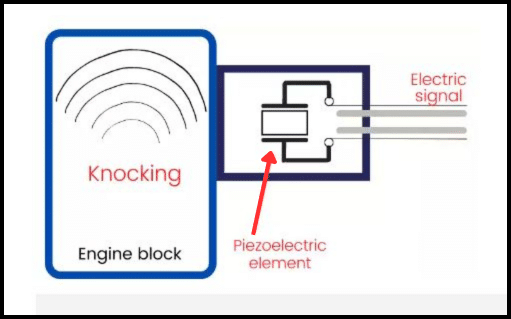
Is it safe to drive a car with a faulty knock sensor?
Some users in the Reddit thread have addressed the issue of whether a car with a faulty knock sensor is safe to drive.
Common Symptoms Of A Faulty Knock Sensor
When a knock sensor isn’t functioning as intended, it may lead to several issues.
- Decreased engine performance: You may notice your vehicle lacking power or experiencing hesitation during acceleration. This can result in sluggishness or difficulty maintaining speed.
- Strange engine noises (knocking or pinging sounds): A faulty knock sensor may fail to detect engine knocking, leading to audible noises resembling knocking or pinging. These sounds can indicate internal issues with the engine.
- Increased fuel consumption: When a knock sensor malfunctions, it may inaccurately adjust the air/fuel mixture, causing the engine to consume more fuel than necessary. This can result in decreased fuel efficiency and higher fuel costs over time.
Having a problem with a knock sensor isn’t always the only reason for these issues. It’s important to get a diagnosis from a professional mechanic to find out what’s causing the problem.
Causes of a Faulty Knock Sensor
Different reasons can cause failure:
- Wiring or connector problems: If the wires connecting the knock sensor are broken or the connectors are damaged, the sensor might not work right.
- Sensor getting dirty: If dirt or oil gets on the knock sensor, it can stop working well and give wrong readings.
- Sensor breaking: If the knock sensor gets cracked or damaged, it won’t be able to sense engine knocking properly.
- Engine getting too hot: When the engine gets too hot, it can harm the knock sensor, making it less effective or not working.
- Sensor getting old: Over time, knock sensors can wear out, like any other part of the car, and eventually stop working.

How to Test Knock Sensor
Alright, let’s dive into testing a knock sensor. Your car’s engine is like a finely tuned orchestra, and the knock sensor is the keen-eared conductor making sure everything stays harmonious. When it senses any unruly knocking or pinging in the engine, it sends signals to the car’s computer to adjust things and keep everything running smoothly. Now, here’s how you can check if your knock sensor is doing its job:
- Listen Up: Start by tuning in to your car’s engine sounds. When you accelerate, listen for any unusual knocking noises. It might sound like marbles rattling around in a can or metal tapping metal. These are signs that something’s not right.
- Diagnostic Tool Check: If your car is a bit more modern, you can plug in an OBD-II scanner. It’s like giving your car a quick check-up at the doctor’s. The scanner can read any trouble codes stored in the car’s computer, including ones related to the knock sensor.
- Visual Inspection: Take a peek under the hood. Look for any frayed wires or obvious damage to the knock sensor. Sometimes, a visual inspection can reveal simple fixes like loose connections.
- Resistance Test: This one’s a bit like checking the pulse of your knock sensor. With a multimeter set to measure resistance, disconnect the sensor and probe its terminals. Compare the reading to the specifications in your car’s manual. If it’s way off, it might be time for a
- Tap Test: Imagine gently tapping a glass to check if it’s cracked. Similarly, lightly tap the knock sensor with a tool like a screwdriver handle. If the sensor is responsive, it should register these vibrations. No response could mean it’s gone deaf to engine knocks.
- Substitution Test: Sometimes, the best way to diagnose a problem is by swapping in a known good part. If you have access to another knock sensor (maybe from a friend’s car or a salvage yard), try installing it and see if the engine behaves differently.
- Professional Help: If all else fails or you’re not comfortable poking around under the hood, it might be time to call in the pros. A mechanic with specialized equipment can perform more in-depth tests and pinpoint any issues with precision.
Remember, keeping an ear out for your car’s knocks and pings is like giving it a regular health check. Catching problems early can save you a lot of headaches down the road. So, grab your diagnostic tools and get ready to tune into your car’s engine symphony!
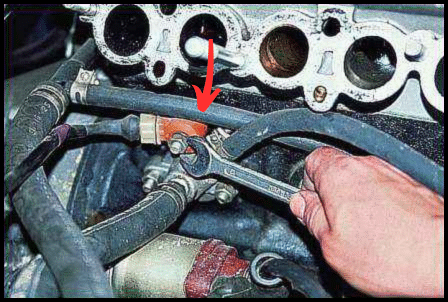
How to Replace a Knock Sensor
Here’s a step-by-step guide to replacing a knock sensor in your car, told like a friend sharing their experience:
- Prepare for the Job: Start by parking your car on a flat surface and popping the hood. It’s like gearing up for a DIY adventure. Make sure the engine is cool to the touch before diving in.
- Locate the Sensor: The knock sensor is usually found somewhere on the engine block or cylinder head. It’s like searching for buried treasure, but instead of gold, you’re after a small, cylinder-shaped device with wires coming out of it.
- Disconnect the Battery: Safety first! Disconnect the negative terminal of the car battery. This step is like turning off the power before messing with electrical stuff. It helps prevent any accidental shocks.
- Remove the Old Sensor: Depending on your car model, you might need to remove some components to access the knock sensor. Once you’ve got a clear view, carefully disconnect the electrical connector and then unscrew the sensor from its mounting location. It’s like unscrewing a lightbulb but with a car part instead.
- Install the New Sensor: Take your shiny new knock sensor and screw it into place. Make sure it’s snug but not too tight. Connect the electrical connector, like plugging in headphones to your phone. You should hear a satisfying click when it’s properly connected.
- Reconnect the Battery: Time to power up again! Reconnect the negative terminal of the battery. It’s like flipping the switch to bring your car back to life.
- Clear Codes (if necessary): If you used an OBD-II scanner to diagnose the issue, you might need to clear any trouble codes stored in the car’s computer. This step is like wiping the slate clean and giving your car a fresh start.
- Test Drive: Take your car for a spin around the block. Listen closely for any knocking noises. If everything sounds smooth, you’ve successfully replaced the knock sensor! It’s like giving your car a pat on the back for a job well done.
Remember, if you’re not comfortable tackling this job yourself, it’s always a good idea to seek help from a professional mechanic. But with a bit of patience and a can-do attitude, you can tackle this DIY project like a pro!
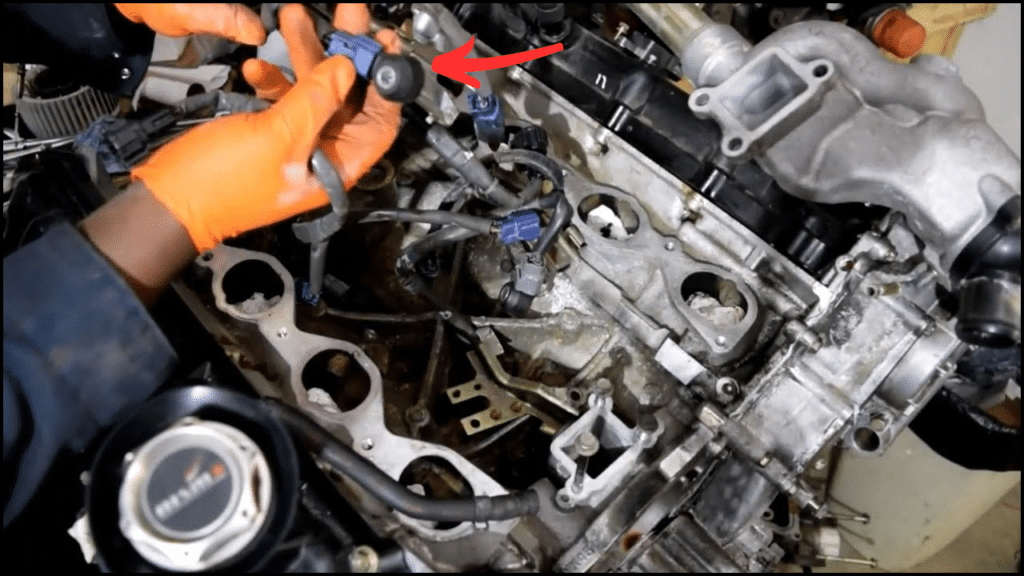
Conclusion:
The knock sensor serves as a vigilant guardian for your vehicle’s engine, detecting and responding to potentially damaging knocking or pinging noises. Like a sharp-eared sentry, it listens for irregularities in engine combustion, signaling the car’s computer to make timely adjustments and maintain optimal performance. By detecting these disturbances early on, the knock sensor helps prevent engine damage, improves fuel efficiency, and ensures smoother operation. In essence, it’s a small yet crucial component that plays a big role in keeping your vehicle running smoothly and reliably. So, next time you hear a faint knock under the hood, remember that your trusty knock sensor is hard at work, ensuring your engine stays in tune.
Frequently Asked Questions (FAQs)
How does a knock sensor affect engine performance?
If your knock sensor isn’t working right, it can mess up your engine in a bunch of ways. Your car might not go as fast, use more gas, cause more pollution, hesitate, or even show a warning light. You might also hear weird noises from the engine.
What happens if the knock sensor is bad?
When the knock sensor isn’t working right, your engine might not work well. It could feel weak and not speed up like it should. This happens because the sensor can’t tell if the engine is knocking, so the timing of the ignition gets messed up, making the engine run less efficiently.
What causes knock sensor failure?
A knock sensor goes bad if you don’t treat it right. Maybe you’re rough with it or accidentally drop it. If you take it out the wrong way, that can mess it up too. Sometimes, the connectors are the problem too.
How does a knock sensor affect engine performance?
When a knock sensor doesn’t work right, it can make your engine act up. Your car might not go as fast, use more gas, make more pollution, hesitate, or even show a warning light. You might also hear strange noises from the engine.
What is the code for a knock sensor?
The code for a knock sensor issue is typically “P0325.” This code indicates a malfunction with the knock sensor in the engine. The code “P0325” means there’s a problem with the knock sensor in your car’s engine. It’s like a red flag that tells you the computer in your car, called the PCM, thinks something’s wrong with the knock sensor or its wiring.
I have a professional background with a Diploma in Information Communication Technology, which brings a blend of technical expertise and creative flair to my writing. Currently, I serve as a writer for Creativeoutrank LLC and contribute to their various websites.
I’m writing is a ref... Read more
